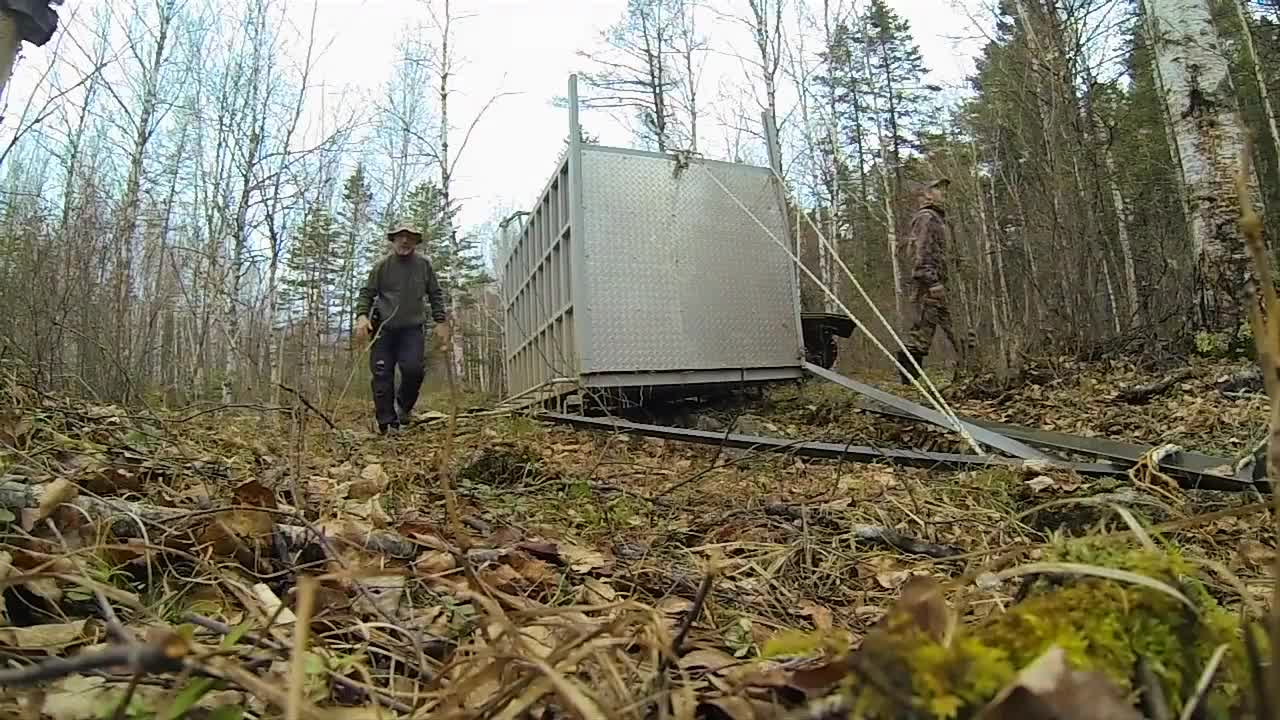Premium Only Content

Incredibly Rare Siberian Tiger Release!
Incredibly Rare Siberian Tiger Release!
This is the moment Zolushka, an orphaned Siberian tiger, was released back into the wild. She was orphaned at just a few months old, after her mother was likely killed by poachers. Having been rescued and rehabilitated, her team was ready to release her in Russia.
You can see everyone taking cover in protective “tanks” as the tiger leaps out of the cage to freedom. Incredible footage; incredible animal!
The Siberian tiger is genetically close to the extinct Caspian tiger. Results of a Phylogeographic study comparing mitochondrial DNA from Caspian tigers and living tiger populations indicate that the common ancestor of the Siberian and Caspian tigers colonized Central Asia from eastern China, via the Gansu−Silk Road corridor, and then subsequently traversed Siberia eastward to establish the Siberian tiger population in the Russian Far East. The Caspian and Siberian tiger populations were the northernmost in mainland Asia.
The Siberian tiger was also called "Amur tiger", "Manchurian tiger", "Korean tiger", and "Ussurian tiger", depending on the region where individuals were observed.
The Siberian tiger once inhabited much of the Korean Peninsula, Manchuria and other parts of north-eastern China, the eastern part of Siberia and the Russian Far East, perhaps as far west as Mongolia and the area of Lake Baikal, where the Caspian tiger also reportedly occurred. During the late Pleistocene and Holocene, it was likely connected to the South China tiger population through corridors in the Yellow River basin, before humans interrupted gene flow.
Today, its range stretches south to north for almost 1,000 km (620 mi) the length of Primorsky Krai and into southern Khabarovsk Krai east and south of the Amur River. It also occurs within the Greater Xing'an Range, which crosses into Russia from China at several places in southwest Primorye. In both regions, peaks are generally 500 to 800 m (1,600 to 2,600 ft) above sea level, with only a few reaching 1,000 m (3,300 ft) or more. This region represents a merger zone of two bioregions: the East Asian coniferous-deciduous complex and the taiga, resulting in a mosaic of forest types that vary with elevation, topography, and history. Key habitats of the Siberian tiger are Korean pine forests with a complex composition and structure.
- Attacks on humans?
The Siberian tiger very rarely becomes a man-eater. Numerous cases of attacks on humans were recorded in the 19th century, occurring usually in Central Asia, excluding Turkmenistan, Kazakhstan and the Far East. Tigers were historically rarely considered dangerous unless provoked, though in the lower reaches of the Syr-Darya, a tiger reportedly killed a woman collecting firewood and an unarmed military officer whilst passing through reed thickets. Attacks on shepherds were recorded in the lower reaches of Ili. In the Far East, during the middle and late 19th century, attacks on people were recorded. In 1867 on the Tsymukha River, tigers killed 21 men and injured 6 others. In China's Jilin Province, tigers reportedly attacked woodsmen and coachmen, and occasionally entered cabins and dragged out both adults and children.
-
 46:29
46:29
SGT Report
22 hours agoAMERICA IS BACK! BYE BYE IRS!! -- Sam Anthony
37.9K75 -
 8:56:13
8:56:13
Dr Disrespect
11 hours ago🔴LIVE - DR DISRESPECT - WARZONE - 150 PLAYER LOBBIES
154K20 -
 1:27:35
1:27:35
Redacted News
5 hours ago"This is NOT normal" Trump just destroyed the woke mob as Dems in disarray | Redacted News Live
131K252 -
 1:39:52
1:39:52
Vigilant News Network
7 hours agoUNHINGED: Dems Say That Elon Needs to ‘Go Back to AFRICA?’ | The Daily Dose
84.9K19 -
 1:13:13
1:13:13
Sean Unpaved
6 hours ago $6.42 earnedQB Carousel
72.4K2 -
 1:04:28
1:04:28
Crypto Power Hour
1 day ago $5.60 earnedThe Crypto Power Hour - ‘In Crypto We Trust’
74.5K8 -
 28:55
28:55
CatfishedOnline
6 hours agoWoman Love Bombed by Salt-and-Pepper Scammer
42.3K6 -
 14:51
14:51
Misha Petrov
5 hours agoDemocrats HUMILIATED at Trump’s Congressional Address! Breaking Down the MUST-SEE Moments
41.5K32 -
 1:39:05
1:39:05
The Quartering
8 hours agoTrump's Epic Speech, Democrat & MSM Meltdown, Zelensky Flip Flops AGAIN & A T*ans CULT Unmasked
121K87 -
 1:28:13
1:28:13
Tucker Carlson
9 hours agoJonathan Roumie: The Weight of Playing Jesus in the Chosen, & Why You Should Observe Lent
158K96